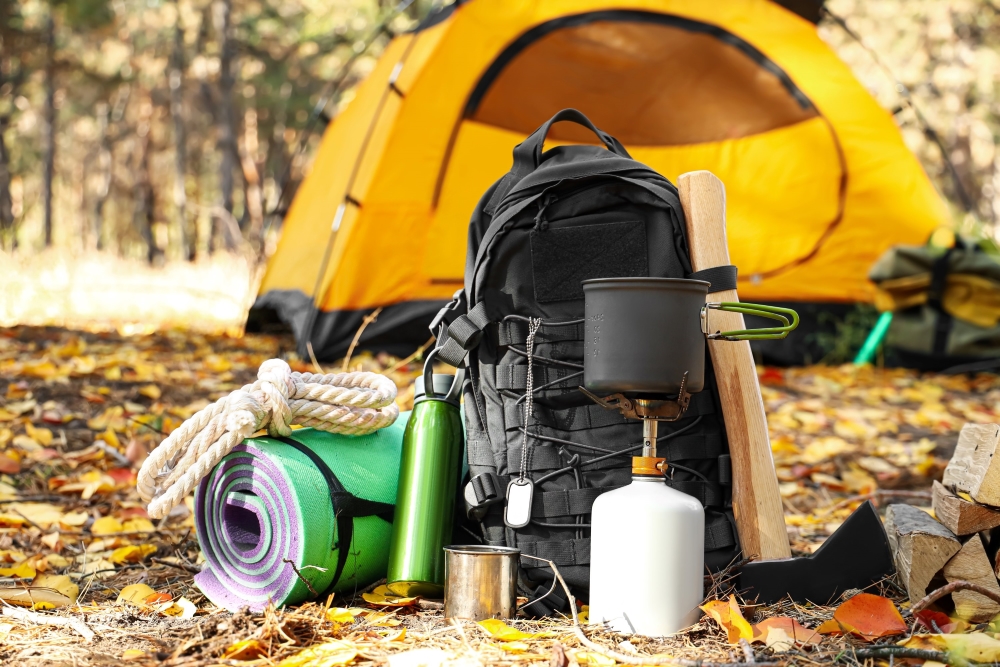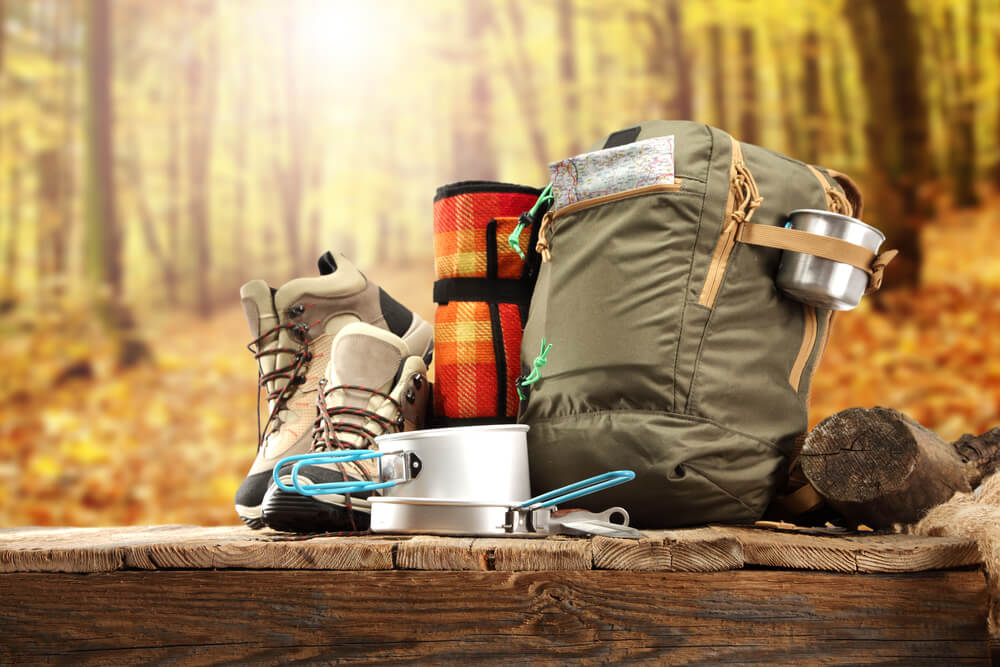Uncategorized
How to Organize Your Camping Gear for Easy Access
Properly organizing your camping gear is essential for a smooth, stress-free trip. When you’re out in the wilderness, you need quick and easy access to your gear—whether it’s for cooking, sleeping, or dealing with an emergency. Disorganized gear can lead to frustration, wasted time, and potentially even missed opportunities for enjoying your adventure. In this guide, we’ll cover how to organize your camping gear efficiently so that everything you need is easily accessible and ready to go.
Why Organizing Camping Gear is Important
When you’re camping, your gear plays a central role in your comfort, safety, and overall experience. Organizing your equipment has several advantages:
- Saves Time: No more rummaging through bags to find the item you need.
- Improves Efficiency: Well-organized gear helps you set up camp quicker and easier, so you can focus on enjoying the outdoors.
- Increases Safety: Having medical supplies, tools, and safety items in clear, designated spots reduces the risk of accidents.
- Reduces Stress: With everything in its place, you’ll have a more relaxed and enjoyable camping experience.
1. Use the Right Gear Containers
The first step to organizing your camping gear is selecting the right storage containers and bags. Containers protect your items and keep them organized, making it easier to find what you need when you need it. Here are some key containers to consider:
Storage Bins:
- Use large storage bins for bulkier camping items like sleeping bags, tents, and cooking equipment. Opt for transparent bins to easily see the contents, or label each container for quick identification.
- If you’re heading into the backcountry, lightweight compression sacks or dry bags are great for packing clothes or sleeping gear in a compact way while protecting them from moisture.
Backpacks and Stuff Sacks:
- For smaller, lightweight items like clothing or toiletries, use stuff sacks or packing cubes. They help keep your clothes organized and compact, while reducing the bulk of your gear.
- A multi-compartment backpack is ideal for keeping essentials like food, maps, first aid supplies, and toiletries within easy reach. Choose a backpack with several small pockets to keep important items like your phone, keys, or flashlight safe and accessible.
Toolkits and Pouches:
- For smaller items like first aid kits, multi-tools, or headlamps, use pouches or small toolkits that can be clipped to your backpack or stored separately.
- Consider using Ziploc bags or smaller waterproof pouches to store things like medications, batteries, or other sensitive items.

2. Group Similar Items Together
Organizing your gear by category is one of the best ways to make sure everything is easy to access and packed efficiently. This method saves you time when you need to locate specific items in the wilderness. Here’s how you can break it down:
Shelter & Sleeping Gear:
- Tent, poles, and stakes: Keep your tent and all its components together in a large, easy-to-spot bag or container. A mesh or clear bag works well for visibility and ventilation.
- Sleeping bags and pads: Compress sleeping bags using compression sacks to save space. Store sleeping pads rolled up and secured with straps.
Cooking Equipment:
- Cooking gear: Store your camp stove, pots, pans, utensils, and plates together in one container or bag. Consider a camping kitchen organizer or a mesh pouch for cooking accessories like a knife, spatula, and dish towels.
- Food storage: Pack coolers or dry food bags separately for easy access. Ensure that food is organized by type and easily accessible, especially if you’re preparing meals in the evening or on the go.
Clothing & Footwear:
- Organize clothes in packing cubes or stuff sacks to compress clothing and keep items organized.
- Store wet or dirty clothes in a separate bag or compartment to keep them away from clean gear. If you’re carrying multiple pairs of shoes, keep them in their own compartment to prevent them from soiling other gear.
Safety & Emergency Items:
- Store first aid kits, maps, compasses, and headlamps in one designated area, such as a small pouch or compartment of your backpack.
- Keep multi-tools and fire starters easily accessible but protected from water, and separate from cooking equipment or food storage.
3. Label Everything
Labeling is one of the simplest yet most effective methods for ensuring quick access to your camping gear. Use waterproof or weather-resistant labels for containers, bags, and pouches. Here’s how to implement labeling effectively:
- Label major gear containers such as those holding tents, sleeping bags, and cooking equipment, so you can quickly identify what you’re looking for when setting up or breaking camp.
- For smaller items, use color-coded tags or labels to group similar items. For example, use one color for first aid supplies, another for cooking gear, and a third for clothing.
- DIY labels can be written with a permanent marker on duct tape or masking tape and applied to the side of your storage containers. Alternatively, you can use small, reusable pouches with clear plastic windows to label contents.
4. Create a Packing List
A packing list is a crucial tool for staying organized both before and during your camping trip. A packing list ensures that you don’t forget any essential items, and it can also help you make sure everything is packed up and ready when it’s time to leave.
Packing List Tips:
- Break the list into categories (e.g., sleeping gear, cooking gear, safety items, etc.) to help you easily spot any missing items.
- Check off each item as you pack it to avoid overlooking important gear.
- Keep the list handy: Have a copy of the list on your phone, in your notebook, or even on a laminated sheet that you can check throughout the trip.
5. Pack Smart: Accessibility is Key
When packing your gear into your backpack or vehicle, think about accessibility. Items you’ll need the most—such as a rain jacket, snacks, or water bottles—should be packed where they’re easy to grab. Organize your pack with the following tips:
- Top-loading packs: Place the items you’ll need first at the top for easy access.
- Side pockets: Use these for items like maps, first aid kits, or sunscreen that you may need quickly.
- External loops and straps: Attach bulky items like sleeping pads or camp chairs to the outside of your pack if possible to save space inside.
6. Maintain Organization Throughout the Trip
Keeping your camping gear organized doesn’t end once you’ve packed everything. Throughout your trip, you’ll need to stay on top of organization to avoid a mess. Here are some tips:
- Pack as you go: Each time you use an item, put it back in its designated spot to maintain order.
- Use bins or bags for dirty gear: Have a separate bag for dirty clothes or wet gear so they don’t mingle with clean items.
- Keep your tent and camp organized: Keep your sleeping area neat by storing gear in designated spots, like under your tent vestibule or in a camping organizer.
Conclusion
Organizing your camping gear can make a world of difference in terms of convenience, safety, and overall enjoyment of your trip. By using the right containers, grouping similar items together, labeling everything, and maintaining organization throughout your trip, you’ll be able to access your gear quickly and efficiently. A little effort spent on organization will lead to a much smoother, more enjoyable camping experience, allowing you to focus on what really matters: enjoying the great outdoors.

